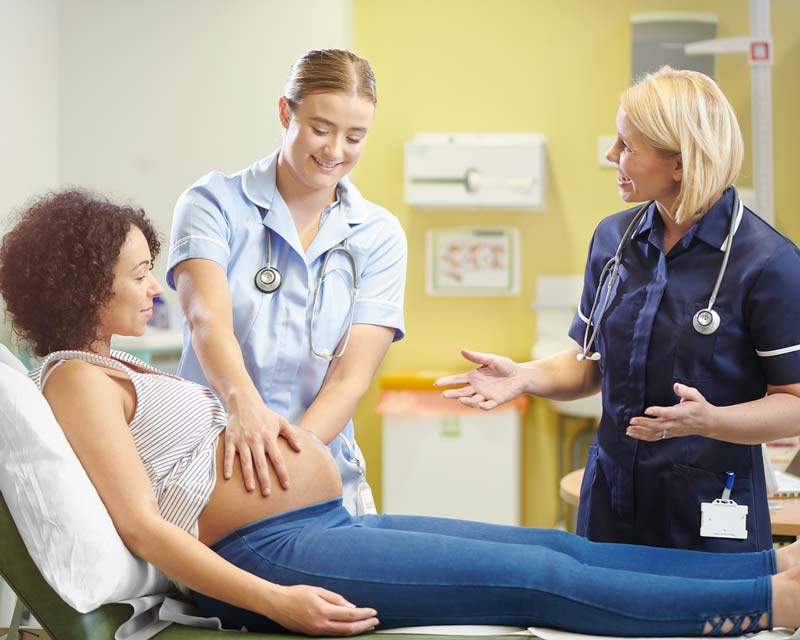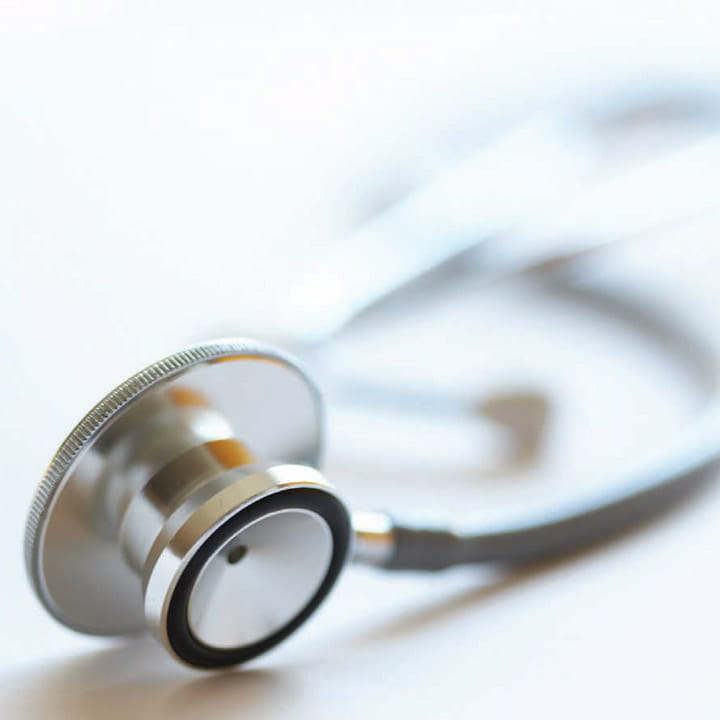
Researchers take next steps to understand COVID-19’s impact on people infected during pregnancy
 Collaboration is one of the foundational principles of The Ohio State University Wexner Medical Center’s new multidisciplinary uterine fibroid clinic that opened in December 2022. The clinic represents a union of research, treatment and education, created to help physicians better understand and treat uterine fibroids.
Collaboration is one of the foundational principles of The Ohio State University Wexner Medical Center’s new multidisciplinary uterine fibroid clinic that opened in December 2022. The clinic represents a union of research, treatment and education, created to help physicians better understand and treat uterine fibroids.
More than 70% of women will experience fibroids by age 50. While the effects are usually benign, fibroids can sometimes cause more serious symptoms such as heavy menstrual bleeding; pelvic, back or leg pain; and even miscarriages or infertility.
This broad impact of fibroids was one of the motivating factors for creating the clinic, under the leadership of co-directors Michael Blumenfeld, MD, clinical professor emeritus in the Department of Obstetrics and Gynecology at the Ohio State College of Medicine, and Amber Bondurant, MD, clinical assistant professor in the Department of Obstetrics and Gynecology
Dr. Blumenfeld has been a faculty member at Ohio State since 1989. He now serves as the clinical director of the Center for Women’s Health and, in addition to his clinical practice, teaches gynecological ultrasound, laparoscopic and robotic-assisted minimally invasive surgery and open surgical techniques.
“In the past, women have had to navigate through multiple health systems and physicians for fibroid treatment, depending on their specific medical needs,” Dr. Blumenfeld says. “So we wanted to build a multidisciplinary fibroid clinic that could manage all of those needs under one roof.”
Co-director Dr. Bondurant serves as the clerkship director for Department of Obstetrics and Gynecology at Ohio State. She’s passionate about fibroid care and feels that utilizing a multidisciplinary approach in the evaluation and management of fibroids provides the most complete care for a condition that impacts so many women.
“We brought together gynecologists, diagnostic and interventional radiologists, reproductive endocrinologists and basic science researchers,” Dr. Bondurant says. “This dedicated team of specialists works together, utilizing advanced technology and research to develop individualized treatment plans for patients.
“Looking at a patient case through the lens of multiple subspecialties is truly the way to provide comprehensive fibroid care. The relationships of the specialists in this clinic will streamline collaboration that can sometimes be difficult to facilitate.”
Another unique feature of Ohio State’s fibroid clinic is its emphasis on research. Renowned clinical researcher Takeshi Kurita, PhD, is working with the clinic to study the mutations and growth hormones of fibroids to develop new therapies and targeted treatment methods.
Dr. Bondurant says research can also help better understand why the instance and severity of uterine fibroids is significantly higher among African American women.
“Fibroids occur two to three times more often in Black women,” she says. “They also tend to grow larger and produce more severe symptoms.”
One of the overarching goals of the clinic is to provide a broad offering of personalized treatment options to a larger population of women, many of whom may have been underserved in the past. To that end, the clinic provides some of the newest technology and minimally invasive procedures for treating fibroids.
In addition to traditional treatments for fibroids, including abdominal and laparoscopic/robotic myomectomy and hysterectomy, the fibroid clinic also offers these advanced minimally invasive fibroid treatments:
Uterine fibroid embolization (UFE)– A UFE is performed by an interventional radiologist who guides a thin catheter into the uterine vessels to release tiny particles into the fibroid blood supply. The granules block the blood flow to the fibroids, shrinking them significantly. Most patients experience a considerable improvement or even find that the symptoms go away completely.
Radiofrequency ablation – This treatment places a needle-like probe into the fibroid either trans-cervically or trans-abdominally to deliver radiofrequency waves that target and destroy the fibroid.
Hysteroscopic resection – This is an outpatient procedure in which a small hysteroscope is inserted through the cervix to examine the uterus for polyps or fibroids. Fibroids can then be shaved down or removed using instrumentation introduced through the hysteroscope.
Laparoscopic myomectomy – This procedure removes the fibroids but leaves the uterus intact, so it’s a good option for women who are still hoping to get pregnant or desire uterine-sparing procedures.
To contact us for patient referral, information on clinical research or any other questions, call 614-293-3069.